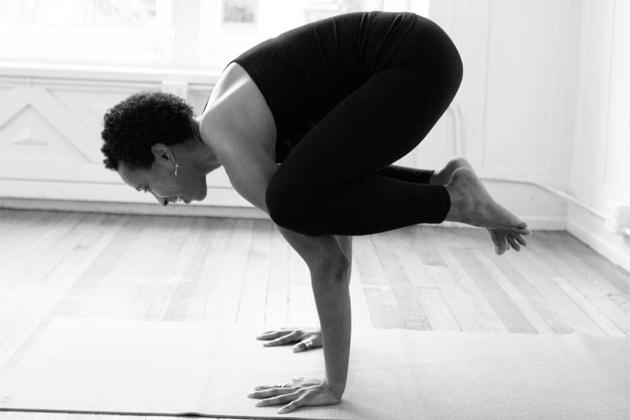I’ve often been asked this question in my vinyasa classes, and the quick answer is if you can hold plank pose for several yogic seconds, then you’re strong enough for yoga arm balances.
It may seem like only body builders or gymnasts should be the only ones attempting arm balances, since it requires some, um, arm strength. And it certainly helps to have strong guns to do many arm balances successfully, but you would be mistaken if you thought that was all there is to it.
Flirting With Flight
Most of us have figured out how to find balance on our feet. Whether we’re aware of it or not, we’re constantly making shifts and movements to be sure we don’t fall down. Sometimes these are big movements like taking a step backward to avoid bumping into someone or more subtle like shifting your weight from foot to foot as you wait in line.
To balance on your hands is not really all that different. Yes, your hands are a mite smaller than your feet, but the same principles apply. You have to flirt with weight distribution by positioning your body in a particular way to stay aloft, and doing this on your hands just means you have to be much more attentive.
The intricacies of yoga arm balances are many, which I’ll save for future columns, but for now I’ll offer three quick starter tips to help you in your take offs.
1. Empower Your Core
By this I mean engage your abdominals and the bandhas, or locks. These will help you feel lighter and compact enough to take flight in any arm balance. I won’t get into detail about the bandhas here as they are dense subject in themselves, but just know that without a strong and awakened core, it will feel like you’re trying to lift a dead weight off the mat, which is not the best use of your strength ultimately. And it’s not all that fun truthfully.
2. Set Your Gaze Along The Horizon
Generally your body follows where your eyes gaze. So if you’re looking down at the floor out of fear of falling, you just might nose dive in your arm balance. Instead, look forward, beyond your nose. Imagine yourself soaring over mountain tops, and your take off will be that much more confident and sure.
3. Engage Your Hands And Feet And Think Light
It may sound obvious that you need to get your hands involved in yoga arm balances, but I’ve seen many students try to balance with either “sleepy hands” or “skittish hands,” so it does bear mentioning.
For more stable arm balances, firmly plant your hands. You might even try clawing the floor slightly to enliven the fingertips. The fingers, much like toes, too, help with securing balance. And though your feet have taken a back seat to your arms in these balances, when you engage them, your legs become willing participants in the pose.
Imagine a bird trying to lift off, with its tail and legs limp or sagging. Not possible. Your legs need to be involved in arm balances, too.
The Ahimsa Factor
It is worth mentioning a note about ahimsa (aka non-harming). If you have any injuries, mainly wrist issues or shoulder issues, you should probably cool your arm balance jets until you’ve healed.
And throughout this practice, be patient and understanding with yourself as you embark on these flying journeys. We’re land-bound creatures by nature, so in some ways we’re defying some laws with these poses. That’s indeed exciting, but it doesn’t mean you’re any worse off if you fall. The tumbles (which are from a relatively short distance) are also part of the process.
And last but not least, remember to breathe. How can you defy gravity without a strong source of fuel? Happy arm balancing!


